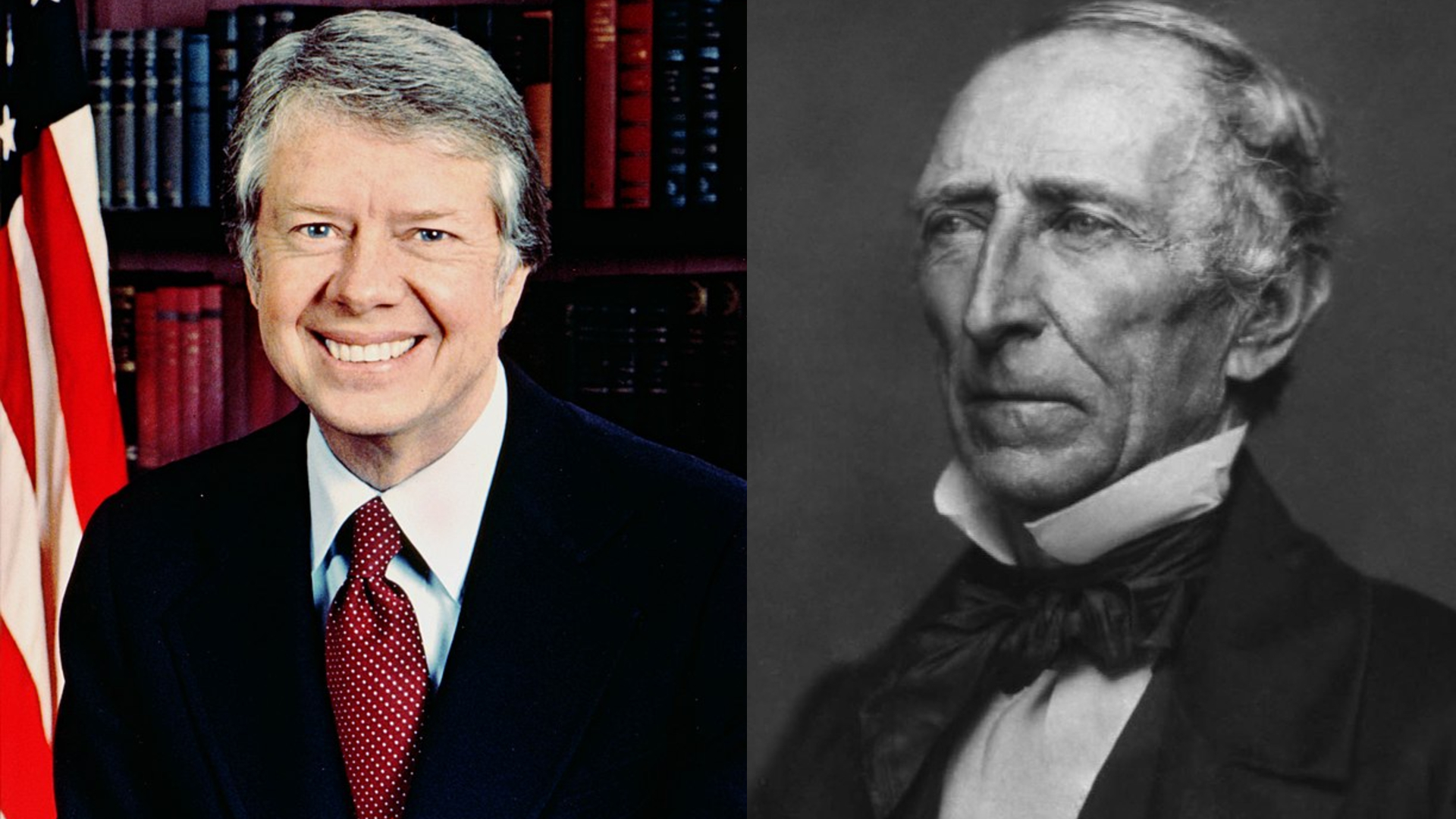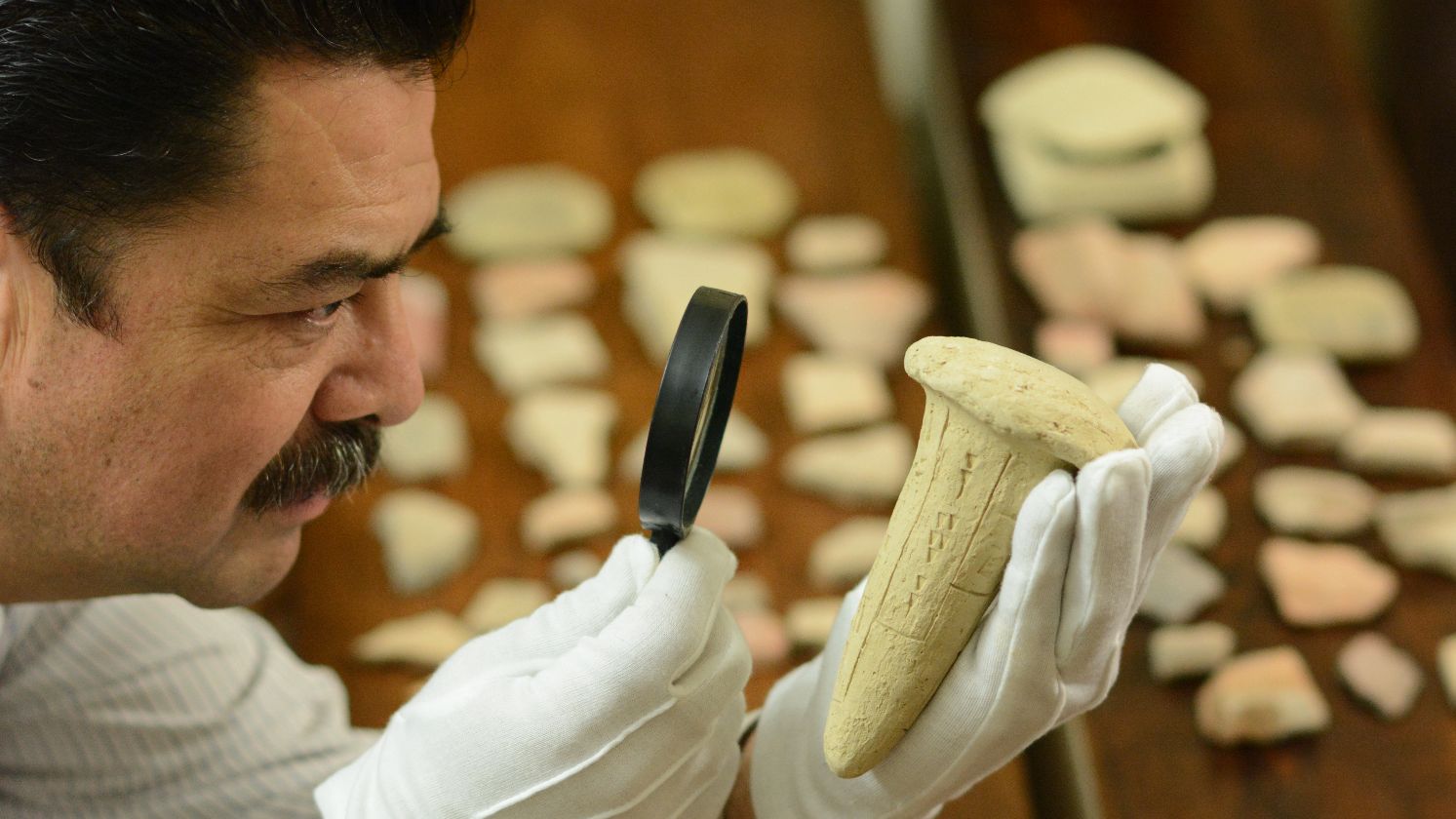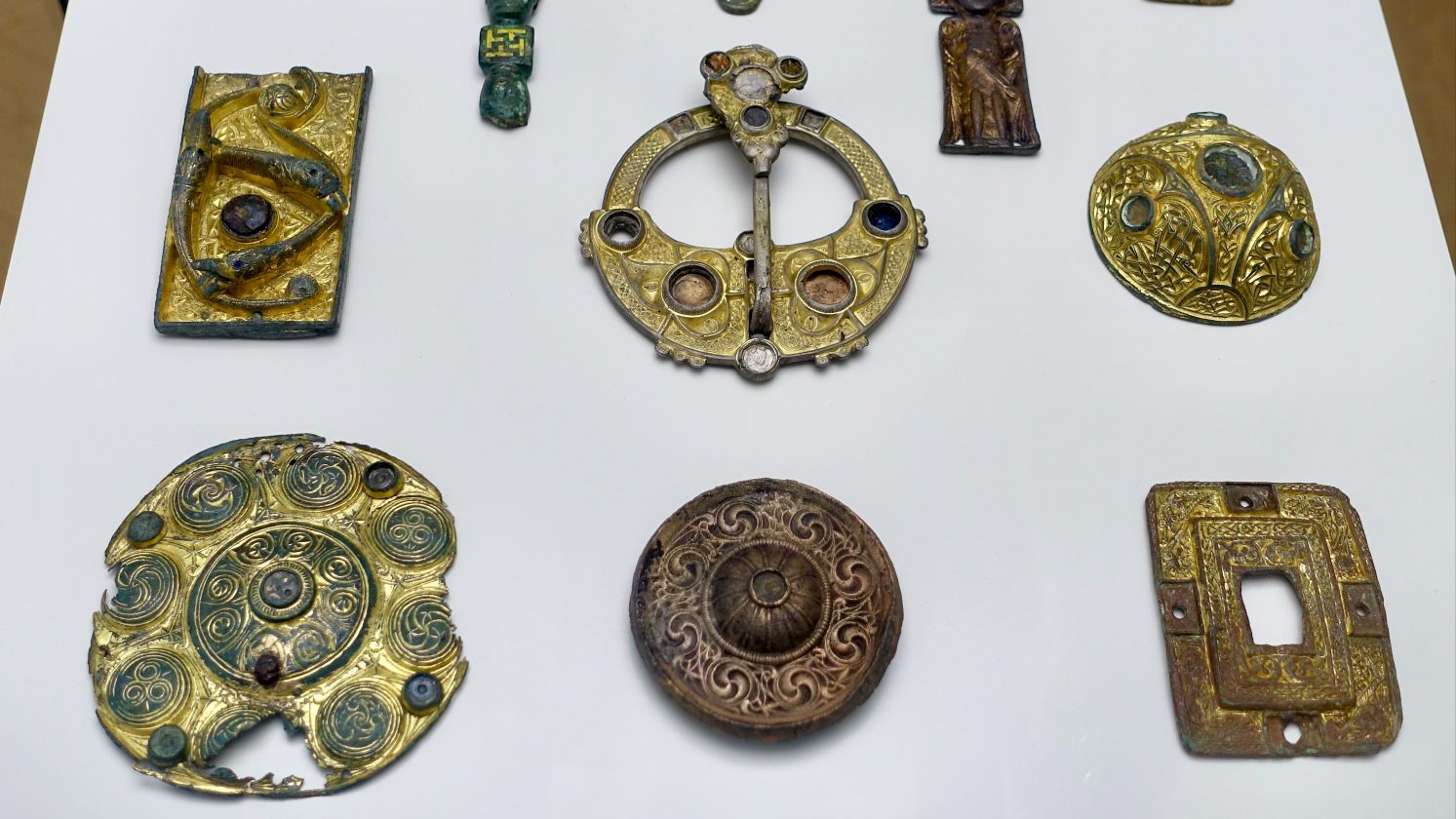American Facts You'll Need to Relearn
Chances are, you've taken what you've learned in school about the US as the truth; after all, why would you be told false historical facts? But as it turns out, there's a longer story to the legends you've been told, and we're going to debunk some common myths you've probably heard. Ready to relearn everything you know? Here are 20 facts of American history that are totally wrong.
1. Betsy Ross Designed the Flag
The legendary tale of Betsy Ross being chosen by George Washington to design the flag has long been a part of US history books—but this tale may have been entirely made up. Instead, the story may have originated from Ross’ grandson, William Canby, who spread the rumor in 1870 purely for family pride. Historians believe that Francis Hopkinson, who signed the Declaration of Independence, was the actual designer of the star-spangled banner you know today.
 Edward Percy Moran on Wikimedia
Edward Percy Moran on Wikimedia
2. The Confederal Flag Wasn’t the Confederal Flag
Unless you're a Civil War buff, this controversial flag representing the Confederacy—a blue diagonal cross over a red background—has a peculiar history that you might not have known about: it was never the official symbol. In fact, it was merely a battle flag used by the Army of Northern Virginia.
3. Christopher Columbus Discovered America
Contrary to what you might have learned in school or elsewhere, though Christopher Columbus is often credited for being the "discoverer of the New World," he never founded America. In fact, he never even set foot there, and millions of people had already been living on the continent before 1492.
4. The Liberty Bell
Originally known as the State House Bell, the Liberty Bell is an important symbol representing American independence and was supposedly first rung on July 8, 1776, to signal this. The crack on it, as the legendary tales go, was supposedly due to it being rung so enthusiastically that the shell gave way—but in reality, the bell had been slowly wearing down for ages.
5. Washington, DC, Was Always the Capital
Contrary to what you might believe, Washington, DC, wasn't always the capital. Instead, there had been eight other candidates—the most recognized of which was Philadelphia. After all, the Liberty Bell was first rung in the city, so it already held significance for the American people. However, it eventually lost the title to Washington, DC, in 1800, after temporarily holding the honor for a decade.
6. Ronald Reagan Didn’t Free the Iranian Hostages
Though the freeing of Iranian hostages happened under Reagan's watch, the negotiations started with the previous administration, with President Jimmy Carter. Yet, the Iranians deliberately released their hostages after Reagan came into office, likely to spite Carter, who was on his way out.
 White House Photographic Office on Wikimedia
White House Photographic Office on Wikimedia
7. Paul Revere’s Famous Ride Calling
Paul Revere's "midnight ride" is one of the most legendary tales from the Revolutionary War. According to the story, the silversmith galloped across Massachusetts—from Boston to Lexington—to warn military forces about enemy troops by shouting, "The British are coming!" Though perhaps one of the most iconic phrases in American history, this is likely not what he said; colonists back then still thought of themselves as British, after all.
8. The First Thanksgiving Dinner Was a Harmonious Feast
Americans know that Thanksgiving is a significant holiday, but the celebration that marks the first feast between Pilgrims and the Wampanoag people isn't a good memory. For one, Native American tribes had already been devastated by plague and disease likely transmitted by European traders and fishermen, so the desire to form an alliance with the settlers was mostly driven by the need for assistance and survival. So while Thanksgiving might be regarded positively by others, the Wampanoag people remember it as a dark time.
 Jean Leon Gerome Ferris on Wikimedia
Jean Leon Gerome Ferris on Wikimedia
9. The Emancipation Proclamation Did Not Free All Slaves
On January 1, 1863, Abraham Lincoln issued the Emancipation Proclamation, declaring that those held as slaves were to be freed. And yet, this executive order didn't put an end to slavery. States in the South rebelling against the Union paid no mind to the proclamation, and the order didn't affect some northern states, like Kentucky, Missouri, and Delaware. But when the Union won the Civil War, the promise of the proclamation was put forth, and slavery was abolished.
 Alexander Gardner on Wikimedia
Alexander Gardner on Wikimedia
10. The “Burning” of Salem Witches
Contrary to popular belief and various depictions, the infamous witches of Massachusetts' then small town of Salem were never burned. While this was the default punishment elsewhere, such as in parts of Europe, in Salem, they were hanged. As many as 19 were killed during these ruthless trials, with at least five more perishing in custody due to malnutrition and unsanitary conditions.
 Joseph E., ca. 1837-1914, artist. on Wikimedia
Joseph E., ca. 1837-1914, artist. on Wikimedia
11. George Washington Had a White Wig & Wooden Teeth
Despite the famous portraits you've seen of George Washington, with his perfect white perm and a set of glorious teeth, he neither wore a wig nor dentures that were completely wooden. In fact, his hair was his own, though he'd powdered (a popular tradition at the time) his natural red hair to make it appear white. He'd also gone through several sets of teeth throughout his life, and these had been made with ivory, brass, along with human and animal (cows and horses) choppers—not wood.
12. The Declaration of Independence Was Signed on July 4, 1776
Despite July 4, 1776, being the most celebrated date in American history as it signaled their independence from Great Britain, signatures for the declaration weren't completely collected until August 2. The declaration, however, went into effect on the date.
13. The US Became Independent on Independence Day
And yet, while July 4 is the most recognized, the more important date should actually be two days earlier, on July 2. That date, after all, is when the vote took place between the colonies. It just took a couple extra days for Congress to approve the documentation.
14. The Civil War Wasn't Fought Over Slavery
While slavery certainly was at the forefront of all minds in the Confederacy, the Civil War wasn't fought for only that reason. The Confederacy also wanted to secede from the Union; the North sought to preserve the Union as well as abolish slavery. Gaining states' rights was also the main goal of the four-year dispute.
15. The Founding Fathers Believed in Full Democracy
While the Founding Fathers believed in a representative government, they didn't exactly agree to have full democracy; in fact, many argued against it. Most believed that a mixed system—with both republican and democratic features—would be the strongest, and the Constitution championed that view.
16. Japanese-Americans Were the Only Ones in Internment Camps
When President Franklin Roosevelt decided to imprison more than 100,000 Japanese-Americans in internment camps during World War II—who weren't given a formal apology by the government under Reagan until 1988—they weren't the only ones who were held in captivity and deemed enemy citizens. German-Americans, Italian-Americans, Japanese-Latin Americans, and Japanese-Peruvians were also forced into these concentration camps, marking a grim chapter in US history.
17. Pilgrims Came to the New World for Religious Freedom
While this myth is partially true, the Pilgrims who had fled England on the Mayflower didn't choose the Americas purely because of their belief that they could practice their religion freely. In fact, the Americas weren't their first pick—they'd initially traveled to the Netherlands. But 12 years later, concerned that their children would become too integrated into Dutch society that they'll lose their English roots, they set sail with their sights on the New World.
 Internet Archive Book Images on Wikimedia
Internet Archive Book Images on Wikimedia
18. The US Always Had 50 States
The US originally began with 13 separate colonies (Delaware, Pennsylvania, New Jersey, Georgia, Connecticut, Massachusetts, Maryland, North and South Carolina, New Hampshire, New York, Virginia and Rhode Island) which later became their own states. Expansion started in 1803, and by 1850, the US had grown to 31 states. In 1900, 45; in 1912, 48. It wasn't until Alaska and Hawaii joined in 1959 that the full 50 we know now was complete.
19. George Washington Chopped Down a Cherry Tree
Of the many legends you've heard about George Washington, one of the most recognized presidents in US history, is that, as a boy, he'd chopped down his father's cherry tree with a newly gifted hatchet. When confronted, he admitted to it, earning the respect and approval of his father, who remarked that Washington's honesty was worth more than any cherry tree. While a touching tale, this story is pure myth and was made up by Washington's first biographer, Mason Locke Weems.
 John C. McRae after a painting by G. G. White on Wikimedia
John C. McRae after a painting by G. G. White on Wikimedia
20. George Washington Lived in the White House
Another myth you may have heard—or assumed—about George Washington is that he lived in the White House. However, this wasn't possible; Washington, DC, wasn't even the capital yet when he became president, and construction on the iconic building hadn't even begun. It was his successor, President John Adams, who'd been the first to call the White House home in 1800 when he and his wife moved in.
KEEP ON READING

1 Weird Fact About Every President
Washington, Lincoln, FDR. Most people know something about the lives…
By Robbie Woods Dec 3, 2024
10 Amazing Popes & 10 Who Weren't So Great
An Odd Cast of Characters Throughout History. From popes who…
By Henry Judd Apr 29, 2025
10 Ancient Civilizations You Don’t Want to Be Trapped In…
Grab Your Time Machine. Trying to pick out an ancient…
By Farva Ivkovic Feb 21, 2025
10 Ancient Lost Cities Yet To Be Found & 10…
Will You Find The Next Lost City?. Based on our…
By Breanna Schnurr Aug 27, 2025
10 Brilliant Military Tactics That Changed History & 10 That…
That Time Egypt Fought 100 Cats. Sometimes reality is stranger…
By Farva Ivkovic Jan 22, 2025
10 Common Misconceptions About Vikings & 10 Facts Everyone Should…
Truth's Way Cooler Than Legend. You can say a lot…
By David Davidovic May 12, 2025














